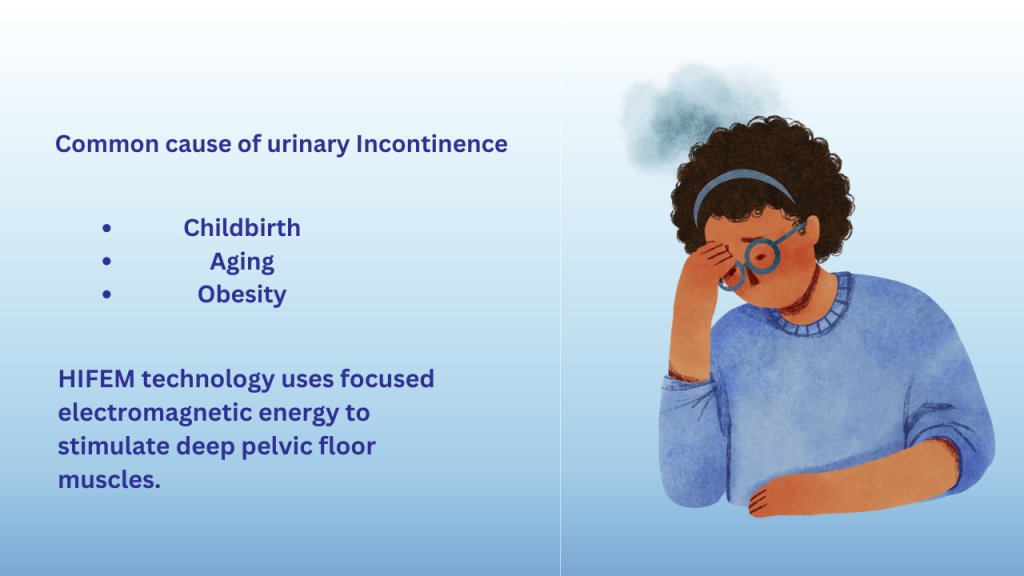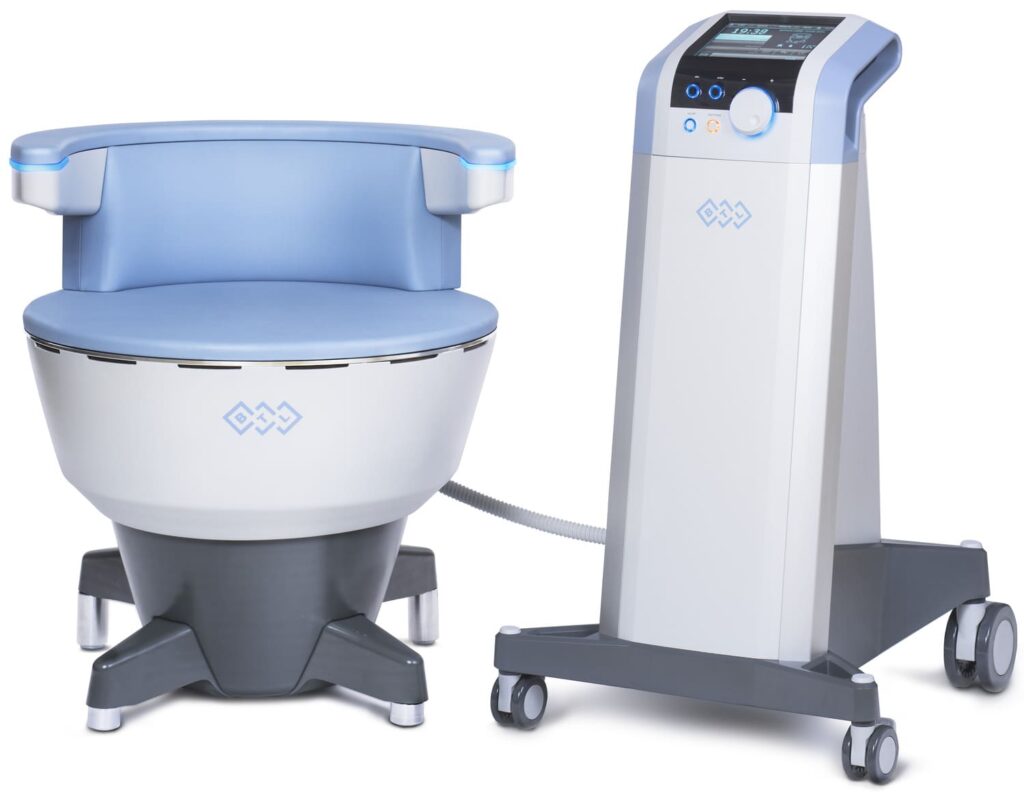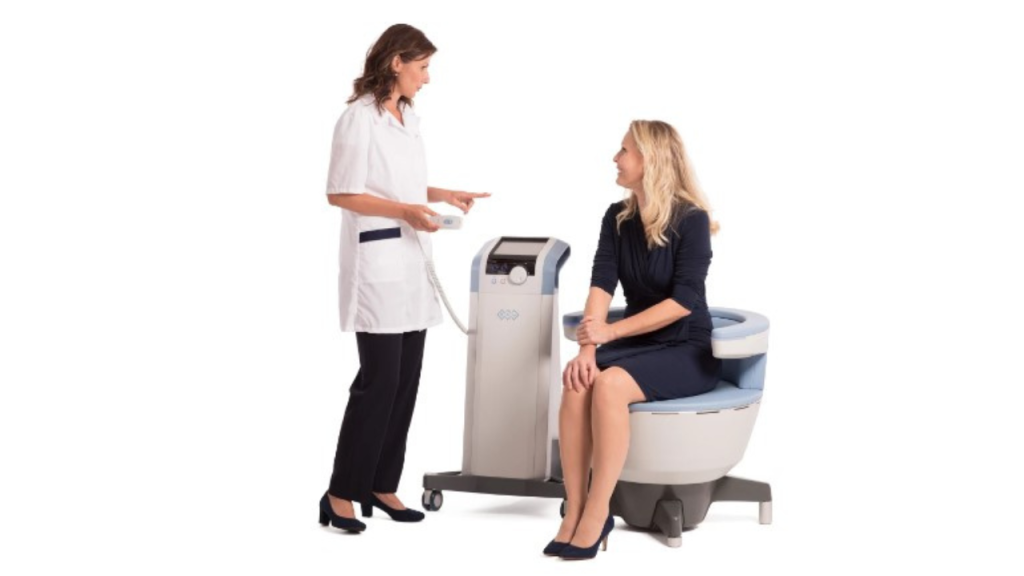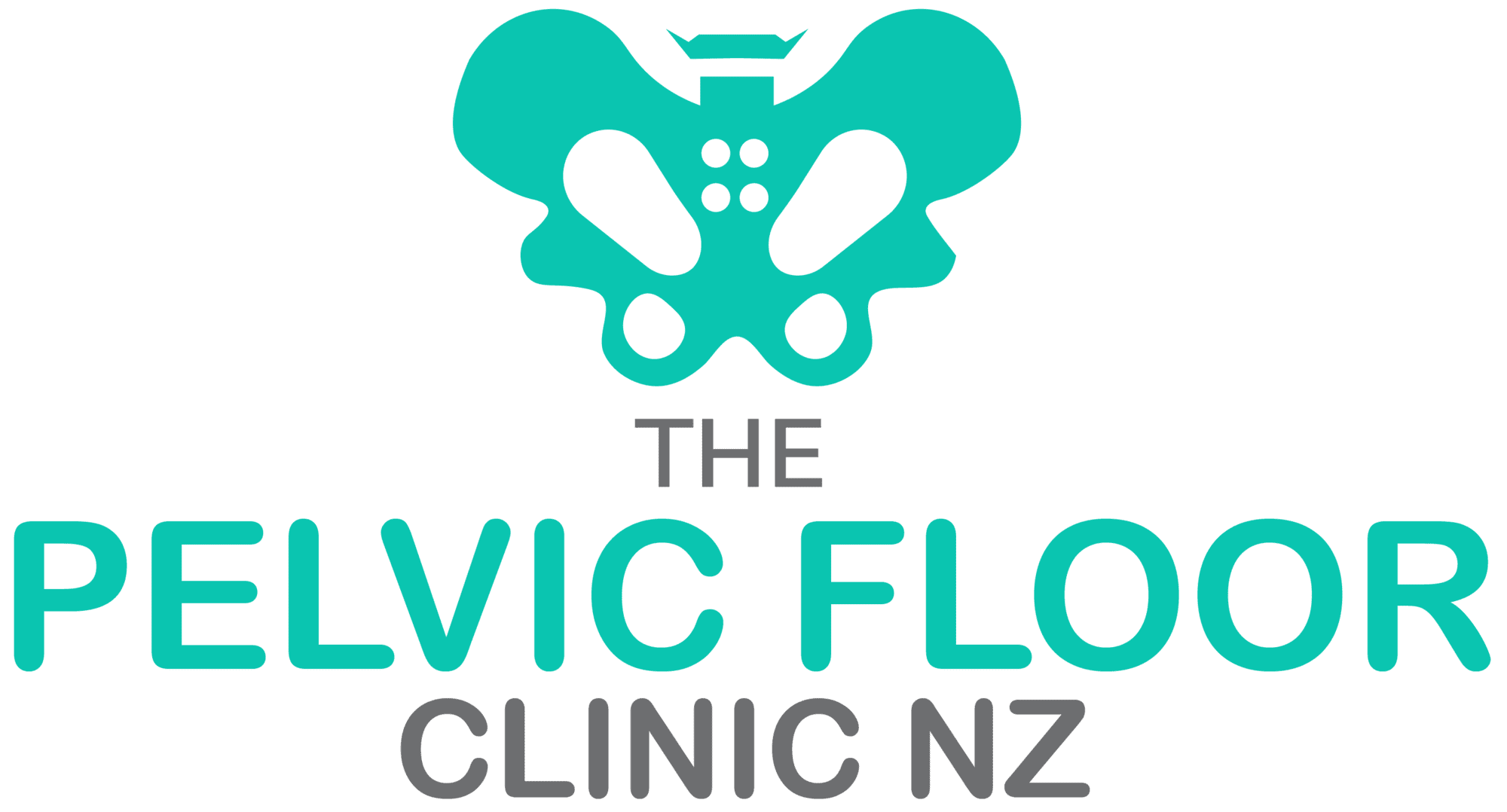Stress urinary incontinence (SUI) is a common condition that affects countless women worldwide, significantly impacting their quality of life. Traditionally, treatments for SUI ranged from pelvic floor exercises to surgical interventions. However, the advent of High-Intensity Focused Electromagnetic (HIFEM®) technology has provided a groundbreaking non-invasive approach for managing this condition.

A recent study led by Dr. Alinsod and collaborators explored the efficacy of HIFEM in treating SUI. Presented at the 38th Annual Meeting of the American Society for Laser Medicine and Surgery in 2018, the study offered promising insights into how this technology can reshape the treatment landscape for women suffering from SUI.
Understanding Stress Urinary Incontinence (SUI)
SUI occurs when physical activities such as coughing, sneezing, or exercising exert pressure on the bladder, causing involuntary urine leakage. This condition is often caused by weakened pelvic floor muscles, which fail to support the bladder and urethra adequately.

Common causes include:
- Childbirth: Weakens or damages pelvic muscles.
- Aging: Reduces muscle elasticity and tone.
- Obesity: Increases pressure on the bladder.
While non-invasive treatments like Kegel exercises and lifestyle modifications can help, their effectiveness often depends on patient adherence and severity of symptoms.
What is HIFEM® Technology?
HIFEM technology uses focused electromagnetic energy to stimulate deep pelvic floor muscles. A single session induces thousands of supramaximal muscle contractions, far beyond what can be achieved voluntarily. This leads to:

- Strengthened pelvic floor muscles.
- Improved neuromuscular control.
- Enhanced support for the bladder and urethra.
The treatment is painless, quick (30 minutes per session), and requires no downtime, making it an attractive alternative for patients seeking non-surgical solutions.
Study Overview
Dr. Alinsod’s study enrolled 30 women aged 57.99±10.36 years diagnosed with SUI (type 0-2a). Each participant underwent six HIFEM treatments over three weeks, with sessions scheduled twice weekly.
The study utilized the King’s Health Questionnaire (KHQ) to evaluate improvements in quality of life, while pad usage was monitored to measure symptom severity. Short-term results were assessed immediately post-treatment, and long-term outcomes were evaluated at three and six months.
Key Findings
1. Improved Quality of Life
The study revealed a significant enhancement in participants’ quality of life:
- Immediately Post-Treatment: Patients reported a 61% improvement based on KHQ scores.
- At 6 Months: Improvement reached 77%, demonstrating the long-lasting impact of HIFEM treatments.
These results highlight how HIFEM not only addresses the physical symptoms of SUI but also alleviates the emotional and social distress associated with the condition.
2. Reduction in Pad Usage
One of the most tangible outcomes was the decrease in reliance on hygienic pads:
- Pre-Treatment: Many participants used 2–3 pads daily to manage leakage.
- Post-Treatment: Pad usage dropped significantly, with 71% of participants either reducing or completely eliminating their need for pads.
This improvement was sustained throughout the study, as shown in the graph below:
| Timeframe | Average Pads Used Per Day |
|---|---|
| Pre-Treatment | 2.8 pads |
| Post-Treatment | 1.4 pads |
| 3-Month Follow-Up | 1.0 pads |
| 6-Month Follow-Up | 0.5 pads |
Graphical Representation
The accompanying graph illustrates the steady decline in pad usage among participants over the course of the study. The number of pads used daily dropped significantly after treatment, with most women relying on minimal to no protection by the six-month follow-up.

Short-Term vs. Long-Term Outcomes
Short-Term Benefits
Immediately after the treatment course, participants reported notable relief from symptoms, including fewer leakage incidents and enhanced pelvic muscle strength.
Sustained Results at 6 Months
By the six-month follow-up, improvements in muscle strength and bladder control were maintained, with minimal regression in symptom relief. This indicates that HIFEM provides durable results, making it a reliable option for long-term management of SUI.
Why HIFEM Stands Out

1. Non-Invasive Convenience
HIFEM requires no surgery, medications, or recovery time, allowing women to seamlessly integrate the treatment into their busy schedules.
2. Effective for a Range of Patients
The study included women with varying degrees of SUI severity, demonstrating that HIFEM can be effective for mild to moderate cases.
3. Holistic Impact
Beyond physical improvements, HIFEM positively influenced participants’ emotional well-being by reducing embarrassment and restoring confidence.
Patient Experiences

Anna, 60
“For years, I avoided social gatherings because I was afraid of leakage. HIFEM has given me my freedom back. I no longer need pads and feel stronger than ever.”
Margaret, 55
“Initially skeptical, I decided to try HIFEM after hearing about its benefits. By the second session, I noticed a difference. Now, six months later, I feel like a new person.”
How Does HIFEM Compare to Other Treatments?
| Treatment | Invasiveness | Effectiveness | Limitations |
|---|---|---|---|
| HIFEM® | Non-Invasive | High | May require periodic maintenance |
| Kegel Exercises | Non-Invasive | Moderate | Demands consistency and proper form |
| Surgical Options | Invasive | High | Potential complications and recovery time |
| Medication | Non-Invasive | Variable | Risk of side effects |
Considerations for Optimal Outcomes
While HIFEM provides remarkable benefits, periodic maintenance sessions may be necessary to sustain muscle strength over time. Patients are also encouraged to adopt healthy lifestyle habits, such as staying active and maintaining a healthy weight, to maximize long-term benefits.
Conclusion
The study by Dr. Alinsod and colleagues confirms that HIFEM technology is a highly effective, non-invasive solution for treating stress urinary incontinence. By significantly improving quality of life and reducing reliance on pads, HIFEM empowers women to regain control over their bodies and lives.
For women seeking a safe, convenient, and impactful alternative to traditional treatments, HIFEM represents a new standard of care, delivering lasting results and renewed confidence.
FAQs
1. How many HIFEM sessions are required?
Most patients undergo six sessions over three weeks for optimal results.
2. Is HIFEM painful?
No, HIFEM treatments are painless, though patients may feel muscle contractions during the session.
3. How long do the results last?
Improvements can last up to six months or longer, with periodic maintenance recommended for sustained benefits.
4. Can HIFEM treat severe SUI?
While effective for mild to moderate cases, severe SUI may require additional interventions.
5. Is HIFEM covered by insurance?
Coverage varies; patients should consult their providers for specific details.




